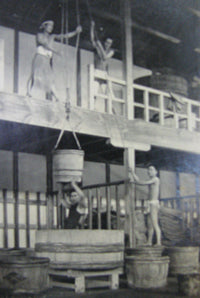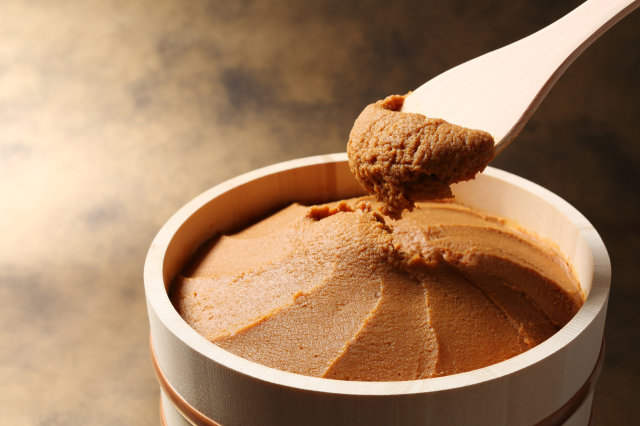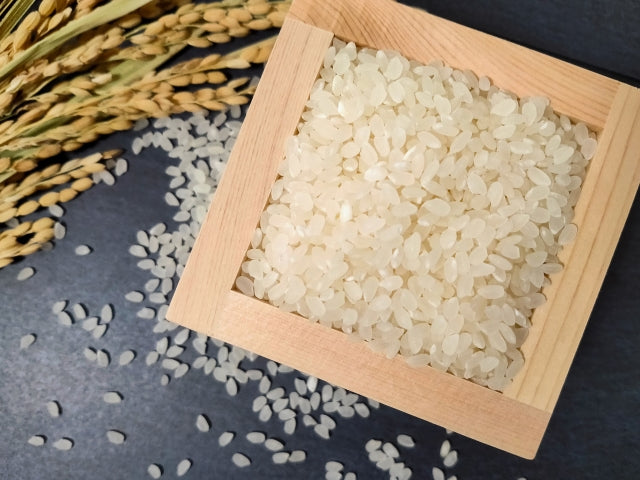About Komechu
Bringing Japan's proud miso to the world
Our soulful miso production is based on the tradition and passion that has been going on since our founding. A flavorful drop that combines techniques passed down since 1820 and shines a new light on dining tables around the world. Enjoy our charming miso at our online shop. We will deliver a moving moment where history and innovation intersect.

History of Komechu Miso
Our shop has been running a rice shop in Edobori, Osaka since the Horeki era (1750s), and at the same time we started producing rice malt and also helping with the preparation of miso at nearby samurai residences. This miso gained a reputation for being extremely delicious, and in 1820, Tadasuke I began to specialize in miso brewing and sales. Since then, we have named it Komechu Miso and it has been loved by customers in Osaka who love to eat it.
In the Taisho, Showa, and Heisei eras, we have had the honor of dining on the occasion of His Majesty's visit to Osaka. As a cooking miso that was developed along with Kamigata cuisine, it has been called red dashi miso since ancient times, and although it is a traditional miso, we are proud of its ``taste that is second to none.''
Using the best ingredients, we take great care and time to carefully brew our products to suit your tastes.
Komechu's commitment

“spirit” of miso brewery and wooden barrels
At Komechu, we do not artificially raise or lower the temperature of our red miso, but instead we carefully age it in wooden barrels using koji and the power of nature. Miso, which undergoes repeated cycles of gentle fermentation in spring and fall, intense fermentation in summer, and quiet fermentation in winter, is rich in the blessings and energy of nature throughout the four seasons. The unique flavor and sweetness comes from the generous use of rice malt and the yeast and oxygen that reside in miso warehouses and wooden barrels during the 1-2 year aging period.

Commitment to materials
Komechu's miso is made from large whole soybeans. Of course, no genetically modified soybeans are used. Furthermore, for the koji, the company uses the most suitable domestic rice available during the preparation season, such as "Akitakomachi" from Akita and "Koshihikari" from Tokushima. In particular, the "White Miso with Mochi Rice," which is available exclusively for New Year's zoni, is prepared with the best ingredients, such as freshly harvested large white soybeans from Hokkaido and freshly harvested "Hiyoku" (mochi rice) from Saga. They also install a device that converts the water into activated water, making it into fine cluster water, for better fermentation.